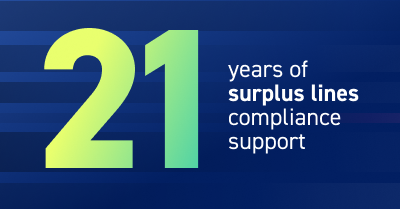Andy Niver serves as Vice President of Innovation and Analytics at ReSource Pro, and is responsible for the development of Analytics and other solutions. He has 13+ years of experience in leading technology, strategy and innovation teams that drive business transformations.
The Plague Infecting Insurance Distribution Channels
To navigate the world of P&C insurance, and its distribution channels, requires a highly complex and fragmented web of partners. One of the root causes is the spaghetti mess of relationships that connect brokers with risk-bearing appetite within the distribution channel. Ultimately, too many brokers work with too many carriers (and vice versa) to match risk and fulfill underwriting demands, which complicates the process even further.
So, What’s the Problem?
With so many moving parts (and people), it can feel like a never-ending search for alignment. Brokers struggle to figure out where they should be placing business; they try to maximize their incentive agreements and create strategic and mutually-beneficial partnerships with their carriers. Not to mention they must streamline and optimize their operations, which is needed to deal with all of this inherent complexity.
On the other side of the fence, underwriting organizations are frantically trying to figure out how they can bring the right risks in. They are tackling questions like: What do those risks look like? Who are my best brokers? How can they perform better screens? Do they design the right incentive and commission structures? And, this is a big one, how can they reduce expenses for servicing these brokers and their unique risks?
Managing this complicated web has become the art of insurance.
Turning Art into a Science
Now, with the technologies available to us, it’s time to start transforming this ‘art form’ into a science. And it all begins with capturing data, structuring that data, and then making it available and transparent at the point of decision. This is critical. Many data and analytics projects have failed because these insights were never integrated back into an organization, which means that there will still be an issue with decision-making and, ultimately, performance.
Let’s look at a couple of examples. First, if an account manager has two comparable quotes for the same type of risk, and he knows that one of the carriers paid a better commission for this risk, would that information be helpful? Most would respond with a resounding yes.
Second, imagine the time, effort and resources that could be saved by underwriters if broker’s applications with a historical likelihood to bind were flagged immediately. They could better weed out the duds and focus time and energy on high quality risks, raising bind ratios and freeing up time for handling a bigger book of business.
Lastly, picture a typical broker and carrier meeting. Instead of a one-sided conversation about growth rates, premium levels or new products to sell, imagine an engaging conversation around shared scorecards (service levels, claims management, hit ratios, renewal and retention trends, etc.) and will allow you to measure the breadth of the relationship. An objective and transparent review of the partnership will foster greater alignment and shared performance.
The next time you are struggling to understand how to identify and foster stronger and more meaningful partnerships, let data and analytics be your guide!



